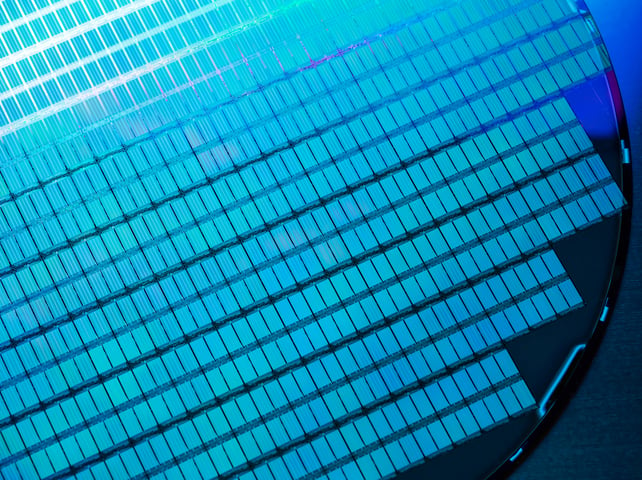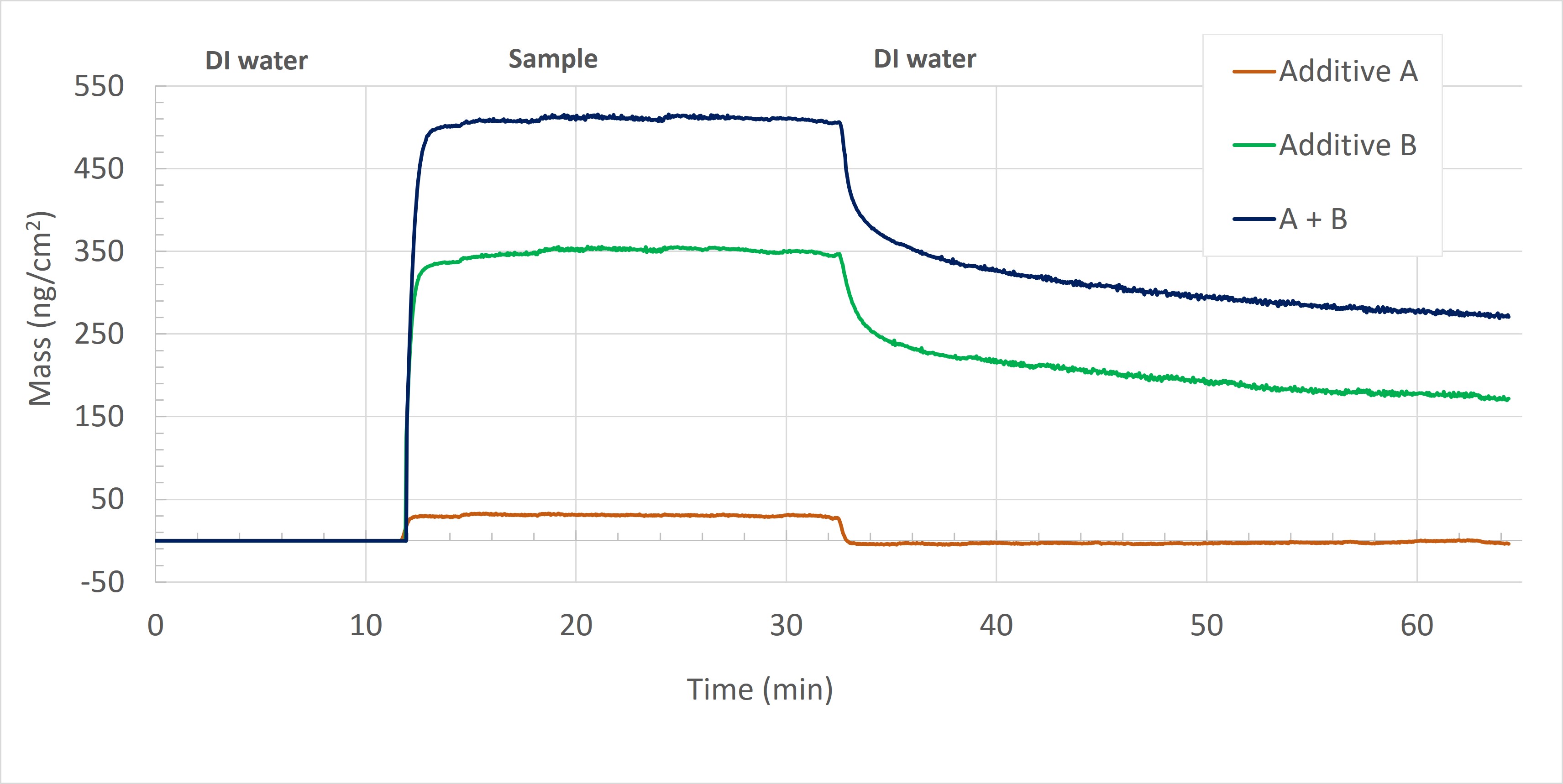
Both in the development of new CMP slurries or protocols, as well as in the improvement of existing ones, it is important to understand the chemistry and the surface interactions involved. In this post, we show a case example from an industrial user that wanted to analyze the interaction between a ceramic surface and different slurry additives, as well as to assess how easy they were removed from the surface by rinsing with water.
QSense QCM-D (Quartz Crystal Microbalance with Dissipation monitoring) is a surface sensitive technology that can be used for analysis of e.g., molecule-surface interaction and optimization of CMP related processes. The measurement is based on monitoring of two parameters, Δf and ΔD, which reflect the mass change and viscoelasticity of the adlayer respectively. The QCM-D data can be used to quantify the mass, thickness, and viscoelastic properties of the layer and to characterize additive-surface interaction.
Here we show how QSense technology was used to study slurry additive interaction with surface materials relevant to the electronics industry. The example demonstrates how such analysis can be used to extract information about the sample - surface interaction at a nanoscale level to support slurry development.
QSensors, coated with a ceramic, were exposed to either of the samples Additive A, Additive B, or Mixture (A + B).
Five QCM-D experiments were performed in triplicates, each including the following three steps
The collected QCM-D raw data was analyzed with QSense analysis software Dfind to extract the quantified mass, shown in Fig. 1. Looking at the mass uptake of the additives A, B and their mixture, it is noted that the interaction of these components show very different behavior when exposed to the ceramic surface.

Figure 1. QCM-D analysis of additive interaction with a ceramic surface. Representative plot of the time resolved mass changes showing the surface mass uptake of Additive A, Additive B, and the mixture A + B, as well as removal in the rinse step.
The insertion of additive A results in the characteristic QCM-D signature of a bulk shift, i.e., a shift that is reversible upon rinse. The reversible shift indicates that the interaction between additive A and the ceramic surface is insignificant, and that no additive remains at the surface after rinse.
Additive B shows a large mass uptake upon interaction with the surface, Fig. 1, and in the rinse step, some of this mass is removed. It follows a typical Langmuir adsorption profile and rapid desorption kinetics upon rinse with DI water. This rapid desorption together with the behavior of the ΔD value (not shown) indicate that additive B adsorbs and forms a layer that strongly interacts with the surface. On top of this strongly adhering layer, there are additional molecules that are loosely bound, and which are removed in the rinse step, leaving only the mass of the strongly interacting molecules after the rinse.
When the additives A and B are combined into a mixture, something interesting happens. The QSense analysis reveals that the surface interaction dynamics of the mixture is similar to that of additive B, but more importantly, the analysis also reveals that the magnitude of the mass uptake is much larger than what would have expected if the two additives would have interacted with the surface in the same way as when they were exposed to the surface as individual components, i.e. the mass uptake of the A+B mixture was larger than the sum of the individual mass uptake of additives A and B. The analysis hence reveals that the two components are interacting with each other when combined into a mixture, and that the complexes formed result in an overall thicker layer at the ceramic surface than either of additives A or B alone.
QSense QCM-D enables analysis of time-resolved processes such as interaction between slurry additives and a surface. In this study, the industrial user wanted to analyze the interaction between a ceramic surface and different slurry additives, abrasive particles (see case study below for details), and combination thereof, as well as how easy they were removed from the surface by rinsing with DI water. QSense technology was used to assess the affinity between a set of different slurry components and the ceramic surface. The analysis revealed how different slurry additives, additive components, and mixtures thereof interact with the target surface. The time-resolved infor
mation provided detailed insight into the surface-molecule interactions. This new detailed insight could be of value when explore and optimize CMP slurries, processes, and protocols.
Download the case study to learn more about the experimental details and conclusions
We thank our industrial partner for the slurry samples, guidance, and feedback on the questions of issue.
This case study was made in joint collaboration between Biolin Scientific and Nanoscience Instruments
Read about how QSense technology is used to analyze contaminant adsorption and desorption, and to compare the efficiency of post CMP-cleaners.
Learn about how QSense® technology can be used to analyze CMP-related processes, such as additive - surface interaction, residue removal, and etching.
